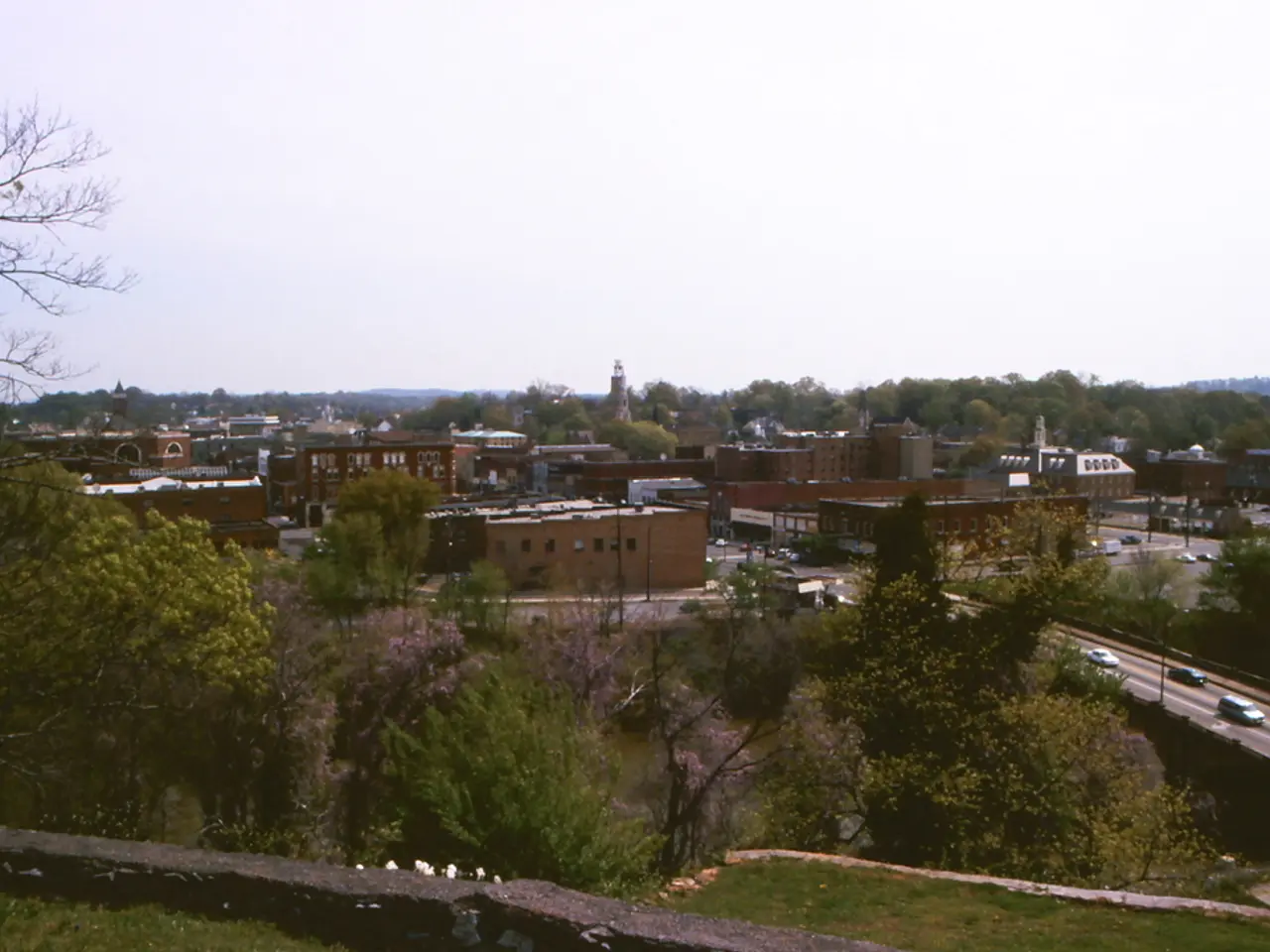Transforming the conventional high street for an improvement
The British high street is undergoing a significant transformation, with numerous strategies being implemented to breathe new life into these once bustling commercial hubs.
In a bid to adapt to the changing retail landscape, the government is slashing red tape to enable quick conversion of disused shops into new hospitality venues such as cafes, bars, music venues, and outdoor dining areas. The new National Licensing Policy Framework simplifies planning and licensing processes, encouraging small businesses and vibrant street life, while protecting long-standing venues from noise complaints to maintain a lively high street atmosphere.
Community-led initiatives are also being supported, empowering local areas to shape high street uses. These initiatives foster stronger local connections and revive community identity within town centers, encouraging spaces for social gathering, cultural activities, and outdoor events including street parties and alfresco dining.
Mixed-use development is a key trend in recent regeneration projects. Sunderland’s High Street redevelopment offers a prime example, combining retail, commercial, leisure, and residential uses in flexible buildings that can adapt between offices and apartments over time. Such mixed-use models enhance economic resilience by diversifying activities and attracting varied demographics to the high street.
Additional development patterns seek to integrate infrastructure and public realm improvements, such as the removal of obstructive footbridges to reconnect historic routes, and encourage active ground-floor retail or hospitality to maintain vibrant pedestrian experiences.
Samuel Lawson Johnston, managing partner of Kinrise, believes that ex-department stores offer enormous opportunities for mixed-use schemes that can become the center of the community. Tom Whittington, director of commercial research at Savills in Manchester, shares this sentiment, suggesting that the British high street is undergoing a natural evolution, with a likely transition to amenities and local companies.
Notable examples of successful high street revitalisation can be seen in places like Frome in Somerset, which initially reduced rents, created a strong brand, and rethought the role of the town council. Altrincham, Trafford, once a ghost town, reversed its fortunes with a holistic approach that engaged residents and businesses, and smart financing of public realm improvements.
However, the high street's current state remains precarious, with record numbers of stores closing. Household names and big chain empires have collapsed or pruned, leading to a retail landscape in flux. Thousands of bank branches have disappeared since the 1980s, with their recent quick exit disproportionately affecting countryside demographics and the elderly.
The government is trying to kick-start growth with High Street Rental Auctions, which will give councils power to auction off leases for empty commercial properties. The Chancellor, Rachel Reeves, opened the 100 banking hubs in December last year in response to the disappearance of bank branches.
Historic England's High Street Heritage Action Zones programme, in partnership with local authorities, has transformed underused or dilapidated buildings and promoted cultural events. In Oswestry, Shropshire, improvements were pursued, combining capital grants for the reinstatement of historic shop fronts and the reuse of empty units with living accommodation above.
The Grade II* Listed banking hall in Pontefract, a building designed by James Paine in 1760, has been auctioned. Meanwhile, the former NatWest Bank on Market Street at Crewkerne, Somerset, a building purpose-built in 1838, has been added to the Heritage at Risk Register.
Nicholas Boys Smith, founding director of Create Streets, emphasizes the importance of adaptability, community-led dynamics, and uncomplicated investment in redeveloping high streets. Hugh Petter, architect and master planner at ADAM Architecture, advocates a curatorial, if not visionary approach, suggesting that landlords should create a spirit of place by choosing the businesses that occupy their properties.
Lucy Denton, a writer and architectural historian, regularly contributes to our platform, offering insights into the history and future of Britain's high streets. Dr Lucy Montague, a senior lecturer at the Manchester School of Architecture, suggests that smaller centers were never heavily reliant on big retailers and are surprisingly resilient.
In conclusion, the revitalisation of Britain's high streets is a multi-faceted endeavour, requiring a balance of adaptability, community engagement, and mixed-use development. By focusing on these key trends, we can create flexible, sustainable, and community-rooted high streets that can evolve with changing economic and social dynamics, balancing traditional retail with experiential hospitality and residential living to strengthen the social and economic fabric of British high streets.
[1] Gov.uk. (2022). National Licensing Policy Framework. Retrieved from https://www.gov.uk/government/publications/national-licensing-policy-framework-2022-to-2023/national-licensing-policy-framework-2022-to-2023
[3] Sunderland City Council. (2022). High Street West Regeneration. Retrieved from https://www.sunderland.gov.uk/high-street-west-regeneration
- Amidst the evolution of the British high street, there's an emerging trend of converting disused historic houses into home-and-garden or lifestyle retail businesses, offering a unique shopping experience and preserving architectural heritage.
- Finance experts predict that the revitalized high streets will have a positive impact on the economy, with small businesses and local companies, rather than just big retail stores, driving growth and fostering financial stability.
- As part of a broader lifestyle shift, we may witness the integration of education-and-self-development facilities into these diverse spaces, creating opportunities for learning, creativity, and personal growth as integral components of our high street experiences.
- With sports enthusiasts actively seeking community engagement, it's conceivable that outdoor recreational areas or fitness studios will become an essential part of the revitalized high street landscape, promoting active lifestyles and social connections.




